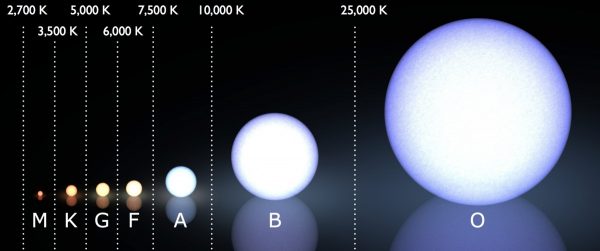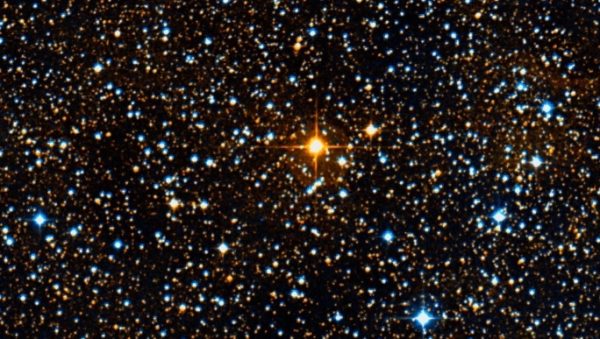"Billions of years from now our sun, then a distended red giant star, will have reduced Earth to a charred cinder." -Carl Sagan
“Bigger mass makes a bigger star,” you might be inclined to say. The smallest stars in size should be small because they have the least amount of material in them, while the largest ones of all are the largest because they’ve got the most material to make stars out of. And that’s a tempting explanation, but it doesn’t account for either the smallest stars or the largest ones in the Universe.
 The (modern) Morgan–Keenan spectral classification system, with the temperature range of each star class shown above it, in kelvin. The overwhelming majority (75%) of stars today are M-class stars, with only 1-in-800 being massive enough for a supernova. But these are only main-sequence stars; there are four other types of stars out there! Image credit: Wikimedia Commons user LucasVB, additions by E. Siegel.
The (modern) Morgan–Keenan spectral classification system, with the temperature range of each star class shown above it, in kelvin. The overwhelming majority (75%) of stars today are M-class stars, with only 1-in-800 being massive enough for a supernova. But these are only main-sequence stars; there are four other types of stars out there! Image credit: Wikimedia Commons user LucasVB, additions by E. Siegel.
As it turns out, neutron stars and white dwarfs are almost all larger in mass than our own Sun is, and yet the Sun is hundreds or even many thousands of times larger than they are. The most massive star known is only 30 times the physical size of our Sun, while the largest star of all is nearly 2,000 times our Sun’s size. As it turns out, there’s much, much more at play than mass alone.

